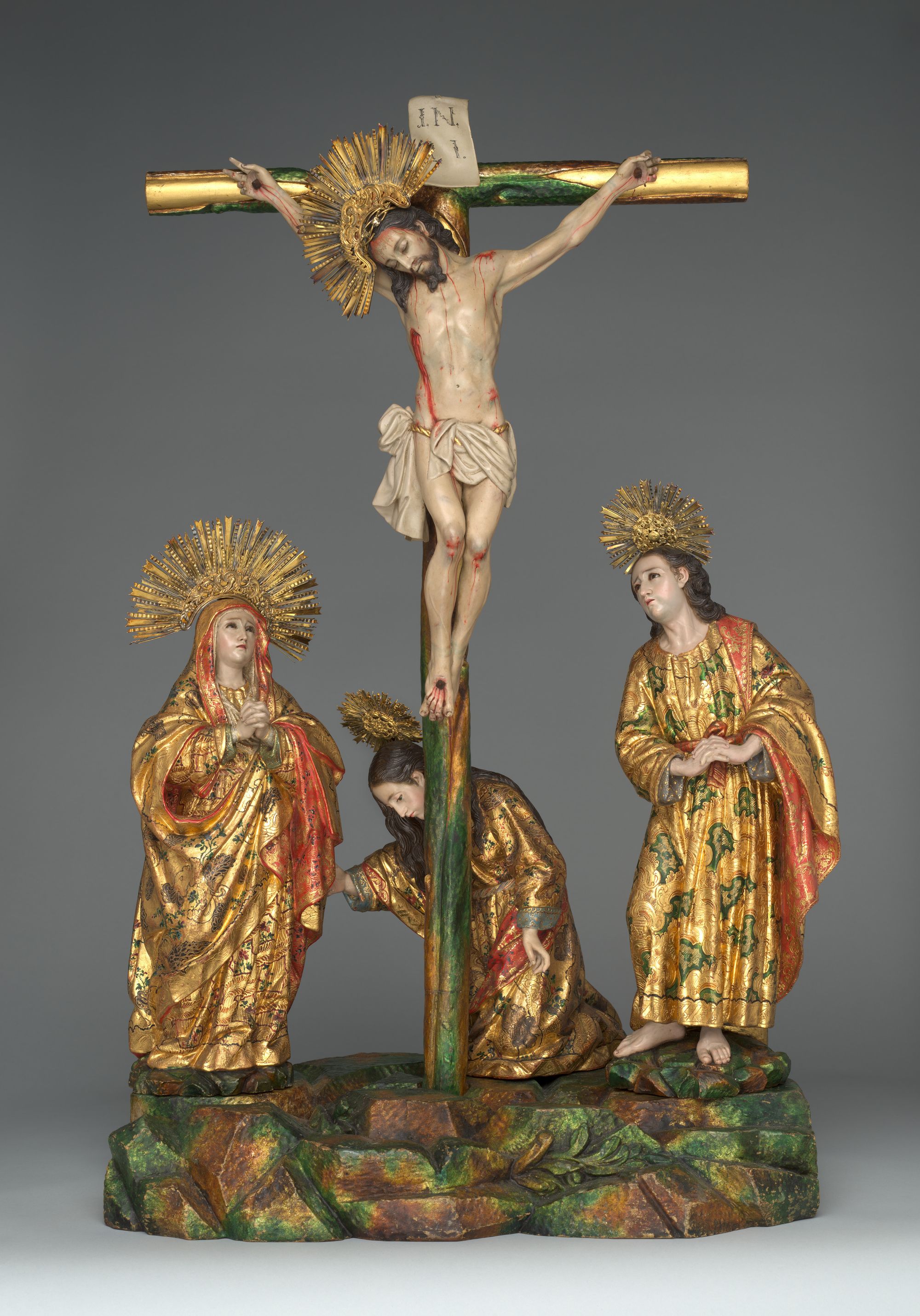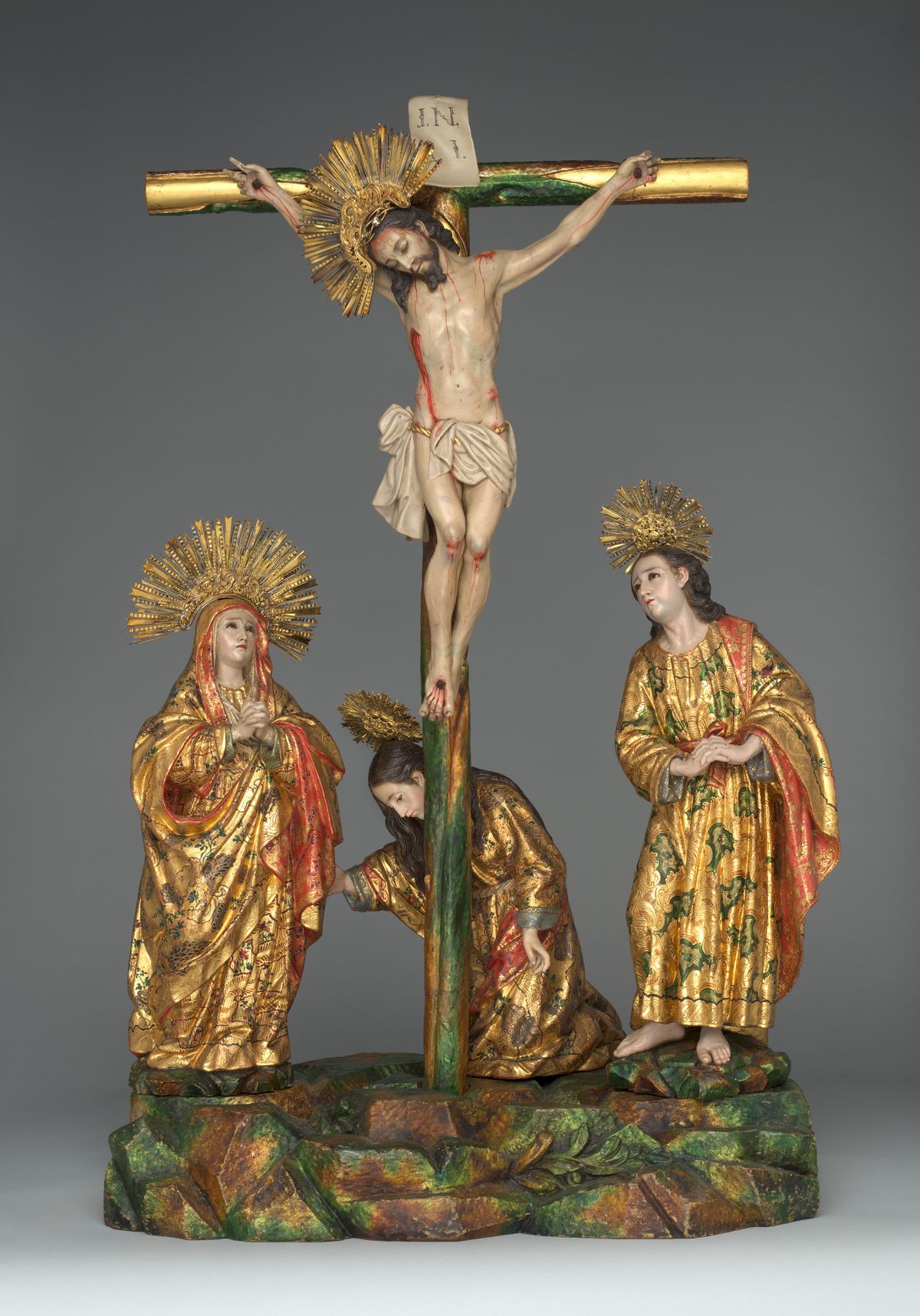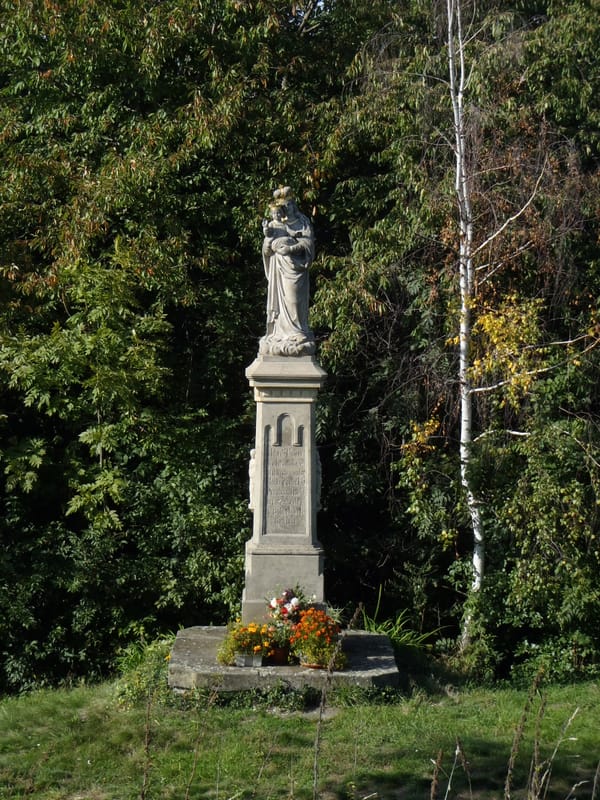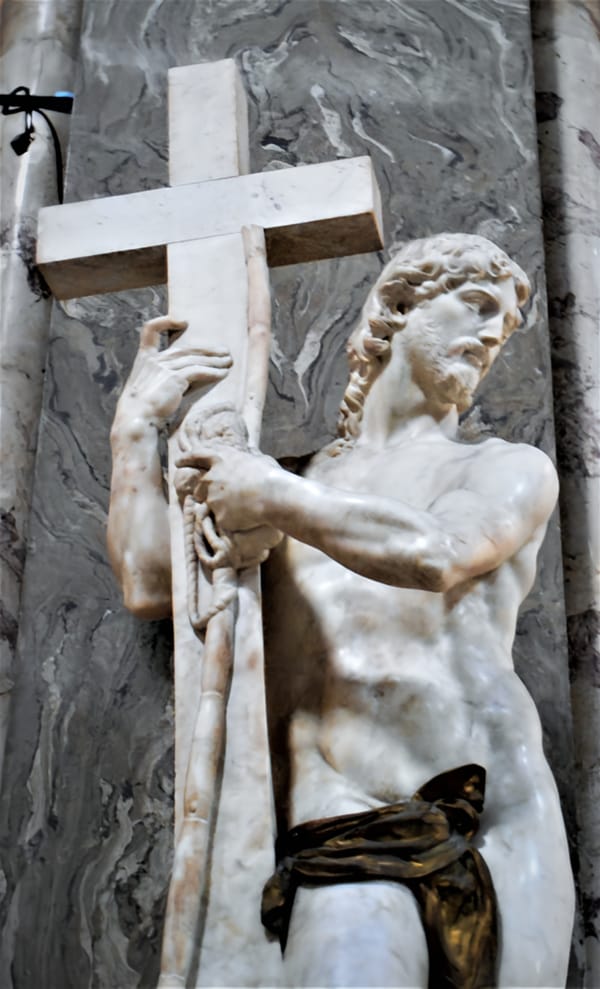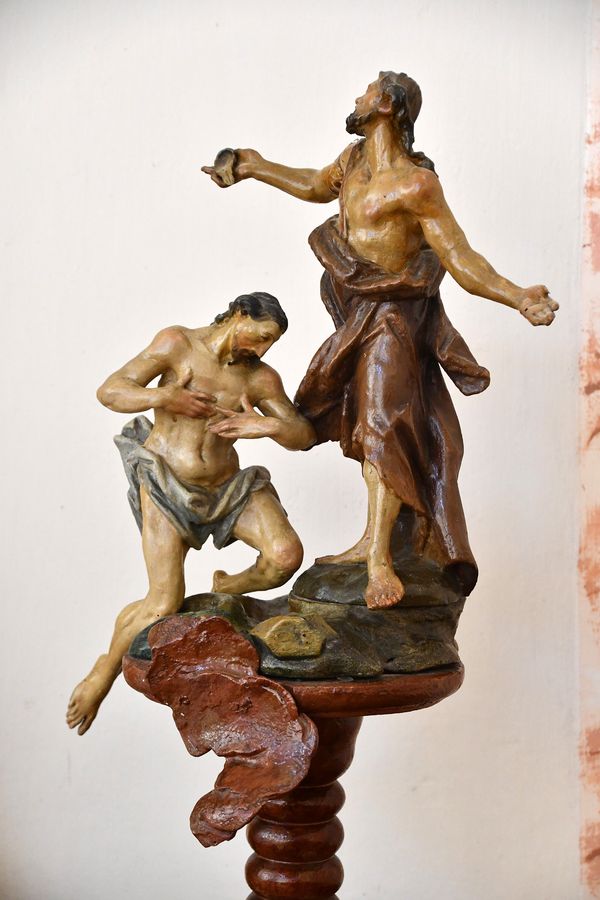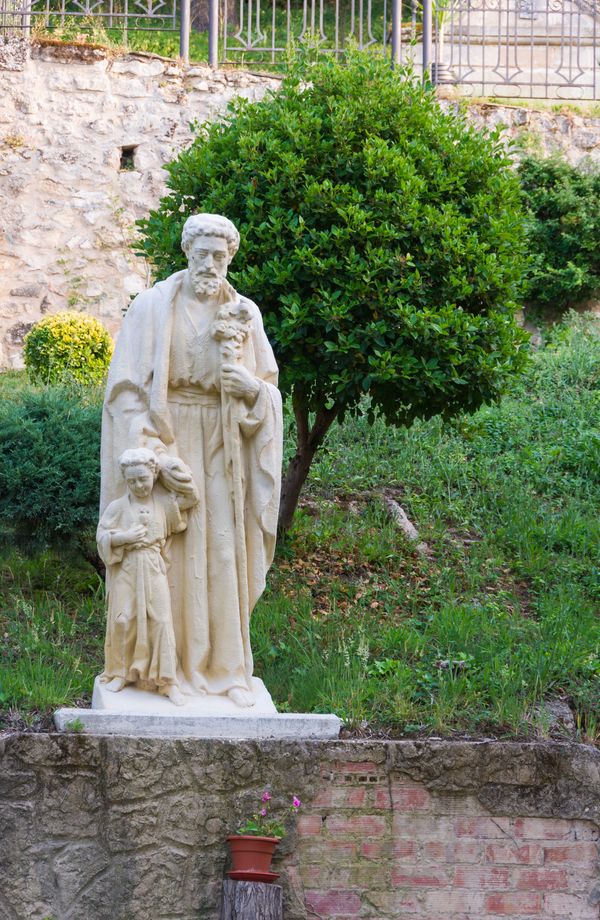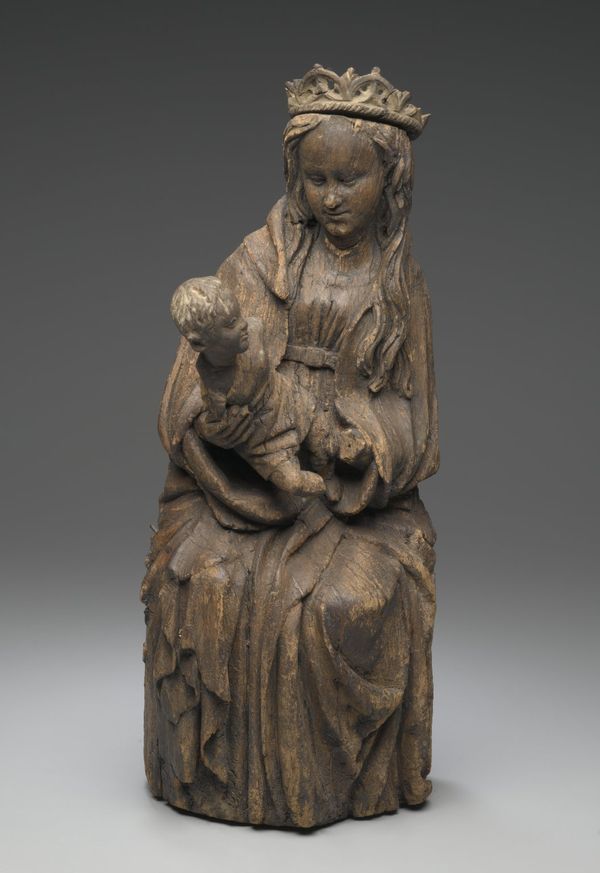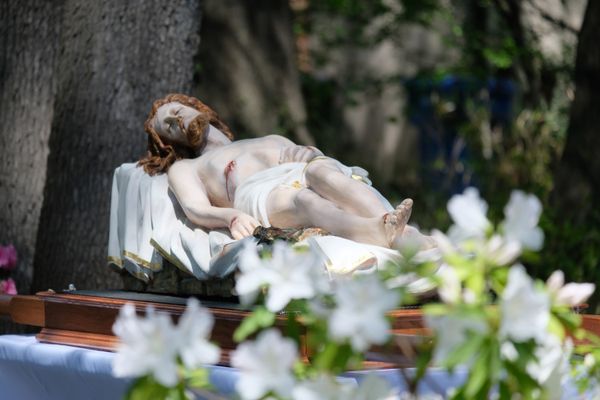Details:
This work exemplifies the visual qualities for which Guatemalan sculpture is renowned, namely, the refinement of its carving and the brilliant color of its polychromy. The Calvary is the work of more than one artist, each skilled in a different aspect of its production. The sculptor or sculptors who prepared the wood and carved the individual figures either sold them unpainted or transferred them to subcontracted painters for completion. The polychromy was accomplished by artists skilled in two distinct techniques, which were often executed by different painters who specialized in the simulation of flesh (encarnación) or the imitation of textiles (estofado). In the first case, the literal meaning of the painter’s task was to "make flesh" or to "incarnate" the figure. Yet another artist, a silversmith, created the crown of thorns and halos that adorn the figures.
The Guatemalan Calvary served as the centerpiece of a domestic oratory established by an Italian-born merchant in the Spanish port city of Cádiz. The material richness of the sculpture and the fact that it had been brought from overseas at great expense were marks of prestige and social distinction. Display of the sculpture signaled not only the owner’s piety, but his professional engagement in the Carrera de Indias and his access to the famed wealth of the Americas.
